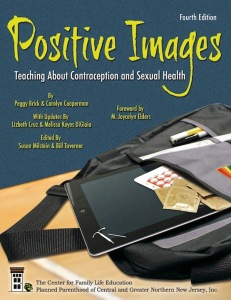Continuing our LARC conversation from Monday, today I’m going to focus on a lesson called, quite cleverly, On A LARC. This lesson plan is also from Positive Images. I like that it builds on Introducing LARCs, dispelling myths, addressing benefits more deeply, and making the idea of a long acting contraceptive more accessible to students. Her are some of the details:
_____________________________________________________________________
ON A LARC
Objectives
By the end of this lesson, participants will be able to:
1. Define long-acting reversible contraceptives (LARCs), and give two examples of LARCs.
2. Dispel common myths about IUCs.
3. Explain some non-contraceptive benefits of LARCs.
Rationale
About half of all pregnancies are unintended and close to half of all unintended pregnancies lead to abortion. In reflecting on these rates, Robert A. Hatcher, editor of Contraceptive Technology, the most authoritative reference book on contraception, quotes Albert Einstein, who famously said, “Insanity is doing the same thing over and over and expecting different results.” Hatcher says that when it comes to teen pregnancy prevention, it’s time we stop doing the same thing over and over. He recommends a new educational emphasis on long-acting reversible contraceptives (LARCs) – methods that can be used for extended periods of time. LARC methods such as intrauterine contraceptives (IUCs) and implants require minimal action on the part of the user, and thus have typical use effectiveness rates that are much higher than other contraceptive methods.
_____________________________________________________________________
The misconceptions about LARCs – and about IUCs particularly – are deeply engrained in many communities in the US. This lesson plan deals with them head on, raising the most common concerns and dispelling them. The most common myths that I hear in my classrooms (and these vary by community) are that IUCs cause abortions and infections.
IUCs (formerly called IUDs, but IntraUterine Device just sounds a little scary; IntraUterine Contraceptive sounds way better) used to be problematic. The Guttmacher Institute’s publication on the matter is tellingly titled The Checkered History and Bright Future of Intrauterine Contraception in the United States. It’s a really fascinating read. It stats with an outline of the problematic features of the Dalkon Shield that cast a negative shadow on IUCs in the United States for decades and then catches the read up to the most current information as of 2002. Of course, new data and IUCs options have become available since then, but it’s not a bad place to start your education on the history of myths surrounding IUCs. (Here is a much more recent, although not as deep, article from the New York Times.) Contextualizing information about IUCs is critical in supporting young people in making appropriate decisions about them.
With far less of a problematic history and therefore far fewer myths, implants rarely elicit the same kind of negative response as IUCs. With far fewer cultural hurdles, and just as much effectiveness, it may be that focusing on Implanon and Nexplanon (effective for 3 – 4 years each) and Jadelle (effective for 5 years) is easier in your classroom. This lesson plan provides all of the information and support for that process too.






